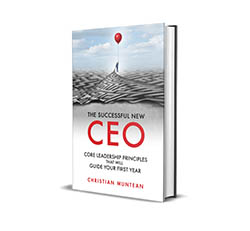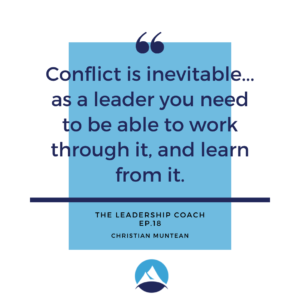The 9 Steps to Protect Your Culture While You Grow

 “I didn’t start this business to be in a corporation.” I was talking to one of the partners of a $250mm company. They had over 200 employees and were feeling growing pains. We had just ridden down the elevator from their high-level floor in a plush office tower.
“I didn’t start this business to be in a corporation.” I was talking to one of the partners of a $250mm company. They had over 200 employees and were feeling growing pains. We had just ridden down the elevator from their high-level floor in a plush office tower.
The neighborhood was elite, filled with internationally known brands. Some of the world’s wealthiest individuals did their business on this street. They were small fish in a big pond. But they were thriving in this pond. And, while New York Stock Exchange probably won’t be part of their future – their days as a “mom and pop” were in the unrecognizable past.
“What is it about corporations that you don’t like?” I asked – knowing that he probably wasn’t referencing their tax and business structure. “I don’t like all the rules. I don’t want to have to wear shirts and ties. I like our culture. It won’t be fun anymore.” The truth was, he was already not having fun. The friction created by the lack of organization and coordination within the company had been growing. It had become personalized, and the partners weren’t getting along.
The real issue is that he liked doing what he wanted. When they were small, he was able to do that. And he had been successful. The problem is, the success that he had played a part in building had grown larger than him. What got him here wasn’t going to get him there. Not only was the company at risk of stalling out, but it was also at risk of fracturing under its own weight.
He thought he had to trade the soul of the company for growth (he doesn’t). So, he fought back.
Fear of Losing Culture – a Primary Obstacle for Growth
When an organization is positioning for growth (or belatedly recognizing that they have already grown), they often are surprised to find resistance from within. Sometimes from leadership. Sometimes from employees. Sometimes from everybody. The resistance is often based on a fear of losing their culture. Losing their identity. Losing that sweet essence that makes them special.
Every company builds its own culture. But very few do so intentionally.
If you’d like to learn more about how to build your own culture, read here.
When most companies start, they are small. Everyone knows each other. Everyone goes through the ups and downs together. And then growth happens. At first, this might be exciting. And then it becomes scary.
What’s going on? Culture is nearly always an accidental reflection of the values, priorities, preferences, and habits of its senior leaders. Most leaders don’t spend a lot of time thinking about these. They also don’t spend time thinking about how others see and are influenced by them. But over time, a culture develops. One that is a reflection of or in reaction to the most dominant leaders.
Let’s say these leaders build a great culture where people feel cared about, inspired, free to innovate and problem solve, and go the extra mile for each of their customers. In most cases, these same leaders would struggle to articulate what exactly it was that they did to create this culture. With growth or change, they often won’t know what to focus on to protect their culture. This creates confusion, hesitancy, and resistance. But it doesn’t have to.
The 9 Steps to Protect Your Culture While You Grow
- Clarify Core Values: Culture is a behavioral expression of shared core values. Clarify those values. It’ll help you attract people who share those values. Shared values help align decision-making, policies, and behaviors across the company.
Shared values are a big part of what gives a company its “special sauce.” If an organization had a soul, it would be the shared values and the stories behind them.
- Embrace the Transition from Informal to Formal: One of the challenges for small organizations is that everything is informal. As things become formalized, especially if using boilerplate HR manuals, safety processes, financial management practices, and so on – it feels lifeless and bureaucratic.
Don’t build structure merely as a management tool or risk-avoidance strategy. Intentionally build structure that helps manifest or project your values (your culture) throughout your organization.
- Hire Leaders Who Get It: Formal or informal – culture comes from leaders. Rigorously hire leaders who get your values and culture. Don’t rush through this or skip it.
To some degree, you can train your staff into your values and culture. But your leaders should already be aligned when they join you. For them, your organization should feel like “coming home”. For you, they should feel like “long-lost family”.
- Create Memorable Moments & Traditions: Aside from basic training, the military boot camp experience is a shared initiation or orientation experience into the military. Shared experiences like this provide common cultural touchstones. Everyone has their own unique but similar story.
Regular corporate traditions provide a similar dynamic. These might be retreats or traditions that surround times of the year or promotions or accomplished goals. Create experiences, moments, and traditions that support shared stories.
- “See” People. Create Systems to Help Remember and Recognize Individual Life Events: I recently received a gift box from someone from whom I receive services. It was for my birthday. It was completely unexpected. I don’t recall telling him my birthday. But he must have systemized that somewhere – and his staff was trained to follow through.
One of the big frustrations for people in a growing company is going from a first name basis with everyone in the company to being given an employee number and restricted access to people you used to see every day. It’s depersonalizing. It causes people to feel like cogs in the machine. Find ways to remember birthdays and meaningful events – such as weddings, or funerals, or welcoming a new child.
- Rewards and Acknowledgments: Similar to seeing people – receiving recognition for a job well done or for “above and beyond” efforts is important. Surprisingly to some, good structure actually can make this a more personal feeling process.
In larger organizations, there is a tendency to just recognize the most visible people. Or the people who most quickly come to the front of a leader’s mind. However, if there is a structure to help ensure that no one is missed or forgotten – it helps prevent the development of a perceived “in-group” and “out-group”.
- Full Circle Communication: An open-door policy doesn’t mean anything if no one walks through it.
Usually (not always), leaders understand they need to communicate to their teams. But teams also need a way to communicate back up to leaders. Create pathways for this communication. Especially create pathways that work for the different kinds of personality types, cultural backgrounds, and confidence levels in your organization. There may be enormously valuable feedback inside of someone who is shy or feels hesitant. Make it easy for everyone to communicate up.
Keeping Your Culture is Important
Your culture is important. You’ve built something special. Neither growth nor change has to be a threat. Follow the nine steps described above and you’ll be able to protect your sense of “you” while you grow.
Take good care,
Christian
Download Your Free Resource:
How To Build a Magnetic Culture – 6 Steps You Need to Know
There are 12 critical questions you must ask before accepting an executive role.
Do you know what they are?
Find out by downloading my free e-book here.
Vision Building Sprints
If you or your team are wrestling with defining your vision and would like help, I’m offering the opportunity for a “Vision Sprint”. This is a dynamic calibrating exercise. We will tightly dial in on your vision for the year and the key steps you need to take to get there. I’m offering either individual sessions ($2500) or team sessions ($4000).
Contact me at christian@christianmuntean.com if interested in learning more or setting up a time.
The Successful New CEO – FREE BOOK OFFER
As an executive coach, I’ve found that the experiences for new executives (or experienced executives in new roles) tend to touch on familiar themes. No one’s situation is the same. But there are common principles that, when followed, do guide executives to success. I introduce those core principles in my new book, The Successful New CEO. I’d like to give you a free copy (just pay shipping)!
situation is the same. But there are common principles that, when followed, do guide executives to success. I introduce those core principles in my new book, The Successful New CEO. I’d like to give you a free copy (just pay shipping)!
The book is divided into four parts:
- Becoming an Executive: Leaders can only lead out of who they are. How do you become the kind of person who successfully and gracefully inhabits this role?
- Seven Essential Executive Skills: The skills that earned you this new role may not be the ones that you need in the role. What are the key leadership skills that become even more important at the executive level?
- Leading Your Leadership Team: More than likely, you’ll be leading other leaders. How do you lead a confident, effective leader? How do you build a team out of leaders?
- First Things: Where do you start? How do you quickly build credibility and engagement? What is too fast or too slow?
The goal of The Successful New CEO is to help you quickly gain the confidence of your team, successfully address the issues you will discover, score early wins, and set a course for a fruitful future.
If you’d like to see how this book will benefit you or someone you know, I’d like to make it available to you for free! Click Here.
Find the value of your company with my free assessment tool: The Value Builder System
The Value Builder System™ is a 13-minute online questionnaire that evaluates your business on the eight factors that contribute more to its attractiveness and value. These factors are scored on a scale of 1-100. Businesses that score over 80 are likely to command 70%-100% higher value than others.
In my podcast, THE LEADERSHIP COACH, we explore effective, high impact and enjoyable leadership. We talk about personal development and the attributes that all effective leaders possess. I interview other leadership experts who share their knowledge and tips to help you build the confidence to lead and learn the habits of good decision-making.
Opportunities
Free Resource: How To Accomplish More Without Doing More is a workbook I created to walk leaders through a process of helping you own your calendar, liberate your time, and still get more done. Download it for free!
Executive and Leadership Coaching: Do you feel overwhelmed? Are you not getting the results you expect from the effort you are putting in? Do you find yourself facing similar challenges time and time again? Would you like to change specific ways of relating or reacting? If you would like to experience predictable, measurable growth Contact me.
Profitable Exit Strategy Workshop: Are you a business owner or partner? Are you over 55? Are you starting to think about exiting your business or active management in the next 3-5 years?
- Are you curious about what your business might be worth?
- Would you like to discover the specific steps you need to take to increase its value and become highly attractive to a buyer?
- Are you planning on handing it over to family or employees and you want to ensure long-term success?
If so, contact me now
Article Categories
Popular articles

Download my free 10-page eBook:
How To Accomplish More Without Doing More:
Eight Proven Strategies To Change Your Life
Discover how to save eight hours during your workweek-even if you're too busy to even think about it. The resource every maxed out executive needs.
